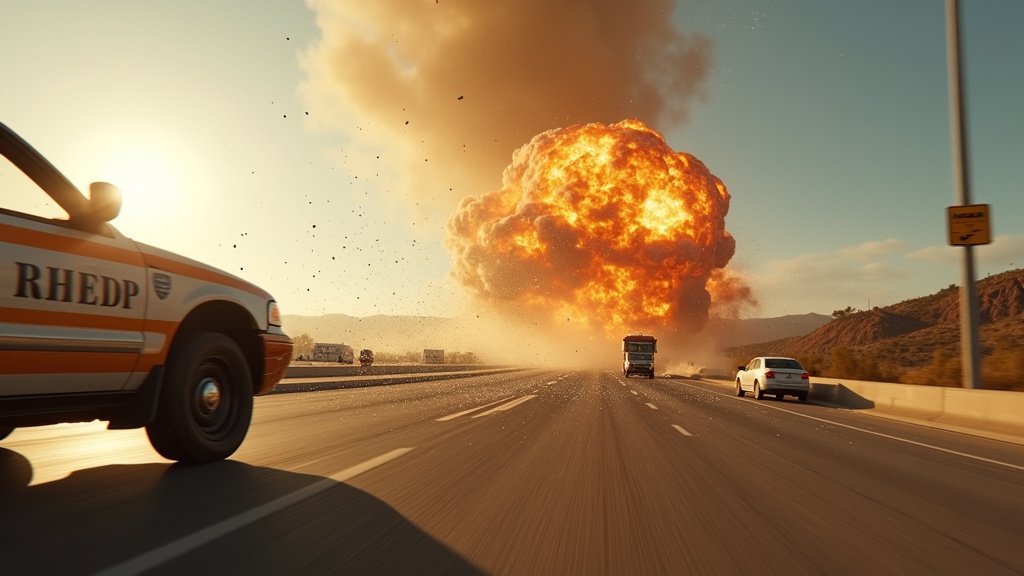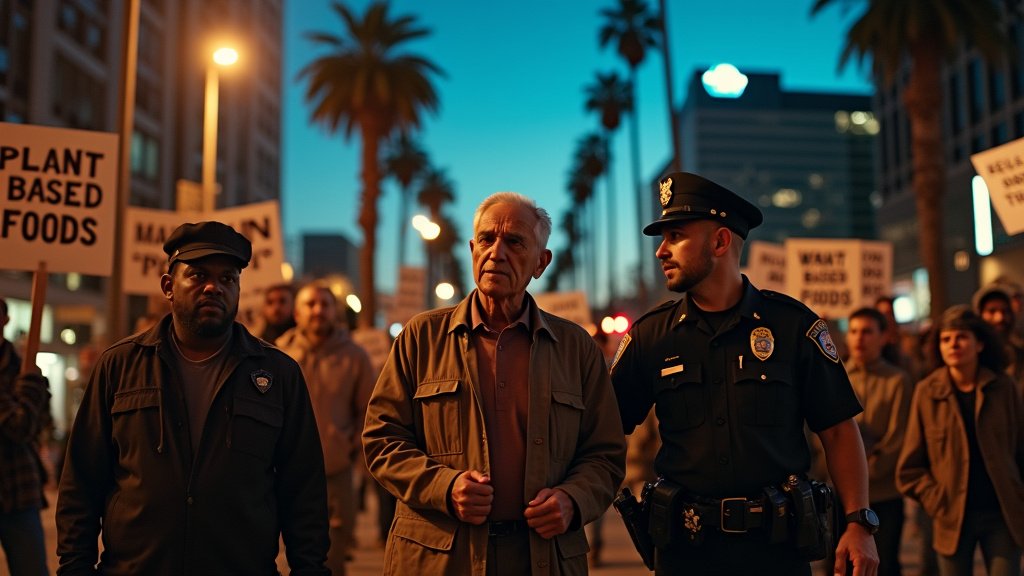A live-fire artillery demonstration commemorating the U.S. Marine Corps’ 250th anniversary took a concerning turn when a 155mm shell detonated prematurely in mid-air over Interstate 5 (I-5) on Saturday, October 18, 2025. The incident, which occurred at Camp Pendleton, resulted in shrapnel striking an unoccupied California Highway Patrol (CHP) vehicle, raising significant questions about safety protocols for military exercises near civilian infrastructure.
A Mid-Air Detonation Over a Major Freeway
The event, intended to showcase amphibious capabilities and celebrate the Marine Corps’ milestone, saw artillery rounds fired from White’s Beach. According to a California Highway Patrol report, one of five shells fired at approximately 1:46 p.m. failed to reach its intended target, detonating overhead before clearing the busy I-5 freeway. While four shells successfully hit their mark, the premature explosion sent metal fragments raining down. A CHP vehicle parked on an I-5 on-ramp sustained a dent and scratch on its hood from the falling shrapnel. A nearby CHP motorcycle officer also reported hearing debris impact his vehicle and the surrounding pavement, though his motorcycle was undamaged.
No injuries were reported during the incident. CHP officers on the scene immediately notified U.S. Marine Corps (USMC) personnel, who promptly suspended further live ordnance firing over the freeway. A safety sweep of the area was conducted, and traffic on I-5 was eventually reopened. The Marine Corps has since launched an internal investigation to determine the root cause of the detonation.
Unusual Occurrence and Training Context
Experts and law enforcement officials described the act of firing live artillery over an active freeway as highly unusual and concerning. CHP Border Division Chief Tony Coronado stated, “It is highly uncommon for any live-fire or explosive training activity to occur over an active freeway”. While Camp Pendleton conducts extensive training, its geography makes dynamic live-firing exercises over coastal areas challenging. Designated artillery firing areas are typically located inland, far west of Interstate 5. Standard operating procedures at Camp Pendleton require advance requests and environmental reviews for any deviations from established firing ranges. Some military sources suggest that large-scale artillery training at Camp Pendleton is “canned” or pre-planned, offering limited training value compared to inland ranges like Twentynine Palms.
Political Firestorm Erupts Over Safety Concerns
The demonstration became a focal point of political contention prior to and following the incident. California Governor Gavin Newsom strongly objected to the plan to fire live munitions over I-5, citing extreme life safety risks and potential distractions to drivers. On Saturday morning, Newsom’s office and Caltrans announced the closure of a 17-mile stretch of I-5, a critical artery connecting Los Angeles and San Diego, impacting thousands of travelers and freight. The Marine Corps initially asserted that no freeway closure would be necessary and that safety protocols were in place.
Following the shrapnel incident, Newsom’s office issued a statement criticizing the federal government’s approach. The governor called the display “reckless” and “dangerous,” stating that the White House “owes Californians an apology”. Conversely, White House officials and some political allies criticized Newsom’s freeway closure as an overreaction and an attempt to “score political points”. This exchange highlighted a significant rift in communication and perceived priorities between state and federal authorities regarding public safety during high-profile military events.
Investigation and Future Protocol Review
The premature detonation and subsequent shrapnel incident have prompted an investigation by the U.S. Marine Corps. Officials confirmed they are “committed to determining the incident’s root cause and applying findings to future missions”. The CHP has also recommended a thorough review of planning, communication, and coordination between federal, state, and local government agencies for future demonstrations near public roadways to “strengthen protocols”.
As the investigation continues, the event serves as a stark reminder of the delicate balance between maintaining military readiness and ensuring the safety of civilian populations. The occurrence of live ordnance impacting an area near a major public thoroughfare, even during a controlled demonstration, has put a spotlight on the necessary considerations for future military exercises conducted in proximity to communities, particularly those serving as vital economic and transportation hubs for areas like Los Angeles and beyond. The news serves as a critical reminder of the potential risks involved when military operations intersect with civilian life.





